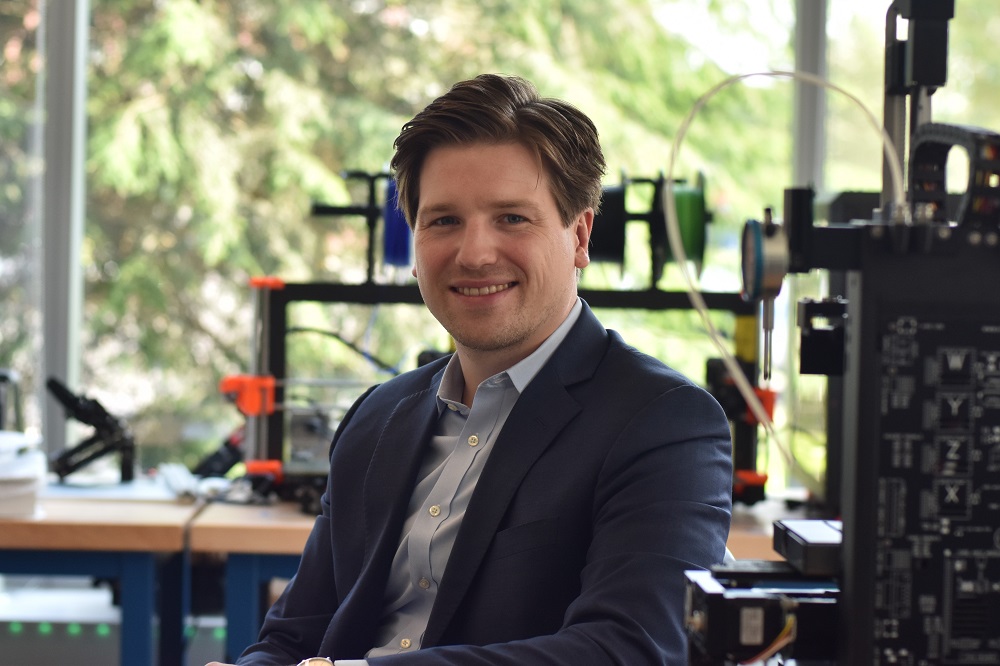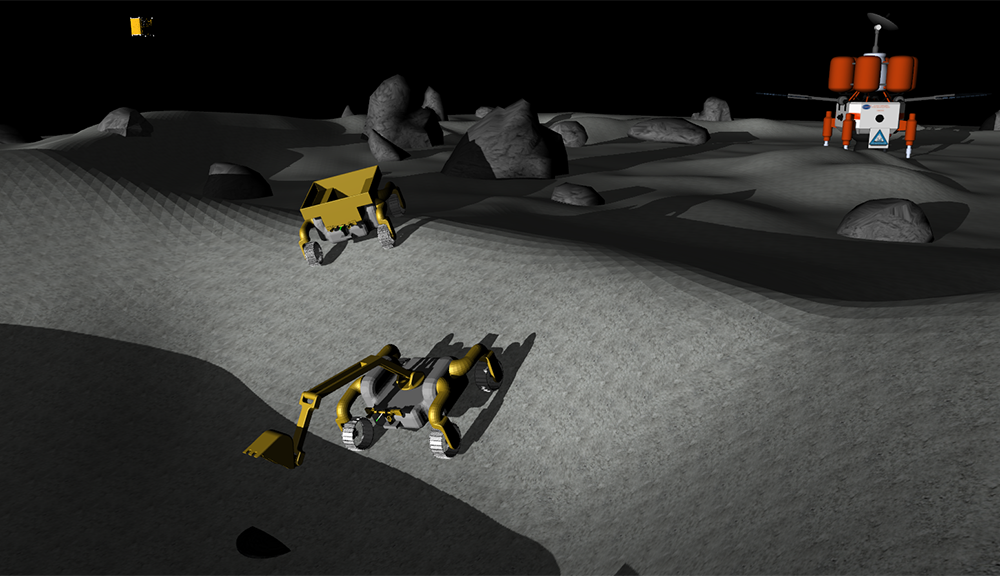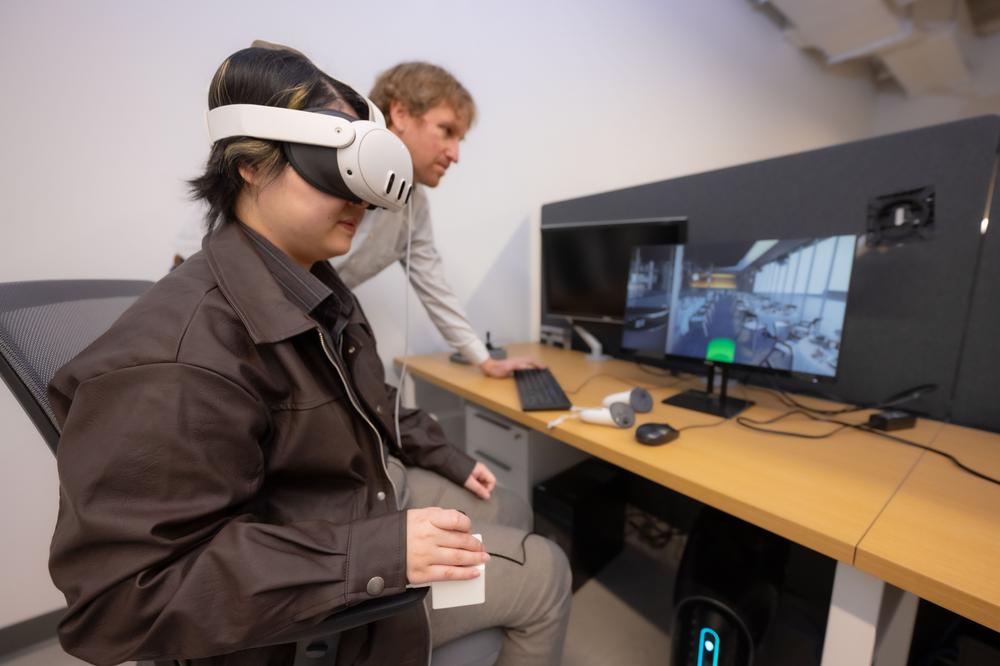A team of WPI robotics engineers led by PhD candidate R. J. Linton is currently competing in the Virtual Robotics Challenge (VRC) sponsored by the Defense Advanced Research Projects Agency (DARPA). Part of the larger DARPA Robotics Challenge (DRC), the virtual competition requires teams to develop software that will enable a simulated humanoid robot to autonomously complete three difficult challenges: driving a vehicle, walking across progressively more difficult terrain, and attaching a hose connector to a spigot and turning a valve.
WPI's is one of 26 teams from around the globe to qualify for the virtual challenge, which runs from June 17 to 27. Up to six teams will be declared winners; each will receive an Atlas humanoid robot developed for DARPA by Boston Dynamics and funding to enable them to compete in the next phase of the DRC, in which teams will program actual humanoid robots to complete a sequence of events required to address a simulated disaster.
The Robotics Challenge was created by DARPA to accelerate the development of advanced robots that can help respond to natural and manmade disasters, including nuclear reactor accidents like the Fukushima disaster in Japan. Such robots would do jobs that are too hazardous for people and operate in places where people cannot safely work. They would need to work in environments and use tools made for people, drive vehicles that have not been modified, and negotiate rubble and other hazards associated with degraded environments.
The overall challenge has four tracks. Teams in tracks A and D will develop robots and operating software; teams in the A track have received up to $3 million in DARPA funding to support their work. Teams in tracks B and C will compete in the VRC; the B teams have been funded by DARPA, while the C teams, including WPI's, must provide their own funds.
In addition to its VRC team, WPI is a member of an A team led by Paul Oh at Drexel University (other team members are from Columbia University, the University of Delaware, Georgia Tech, Indiana University, Ohio State, Purdue, Swarthmore, and the Korea Advanced Institute of Science and Technology). A and D teams, along with the six winners of the VRC, will compete in trials this December in which their robots must complete multiple tasks, including driving and walking to reach a simulated disaster site, removing debris blocking an entrance, climbing a ladder, using power tools to breach a barrier, and locating and closing a valve. The winner of the DRC will receive $2 million.
The WPI team, led by Dmitry Berenson, assistant professor of computer science and robotics engineering, will develop the algorithms that will allow the team's Hubo robot to find and turn the valve. Other members of the WPI team are Sonia Chernova, assistant professor of computer science and robotics engineering, and Robert Lindeman, associate professor of computer science.
Teams in the VRC complete virtual challenges with a simulated Atlas robot. The robot and the simulated environments it operates in are located on remote servers. The competitors complete each of the three VRC challenges five times, with the details of the challenge differing for each run. For example, in one run the robot might have to climb over a pile of rubble, while in the next one it may have to cross a pit of mud in which cinderblocks have been hidden to create a tripping hazard. Each run must be completed within 30 minutes, after which points will be awarded based on how well and how quickly the task was completed and how much data the team required (since communications bandwidth may be at a premium in an actual disaster, teams can earn more points by reducing data use by, for example, minimizing the use of the camera that shows them what the robot is seeing).
To prepare for the challenge, each team received access to the simulated environments and a detailed simulation of the Atlas robot, one of the most sophisticated humanoid robots ever built. Able to walk upright and strong enough to carry heavy objects and traverse difficult terrain, the robot has 28 degrees of freedom, sensate hands for using tools, and an articulated sensor head with stereo cameras and a laser range finder.
In addition to Linton, WPI's VRC team (the WPI Robotics Engineering C Squad), consists of Oke Nnasia, graduate students in robotics engineering at WPI; Jonathan Vo, an MBA student at WPI; Perry Franklin '16, a double major in robotics engineering and computer science; WPI faculty members Taskin Padir, assistant professor of electrical and computer engineering and robotics engineering, Gregory Fischer, assistant professor of mechanical engineering, and Michael Gennert, professor of computer science and director of the Robotic Engineering Program; Doug Conn and Kevin Knoedler, software professionals in California; Alison Kristoff, a software professional in Massachusetts; Mario Arbula Saavedra, a faculty member at the Universidad del La Sabana in Columbia; and Vincent Mancera Hernandez, a student at the Universidad del La Sabana.


